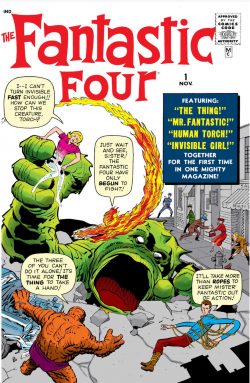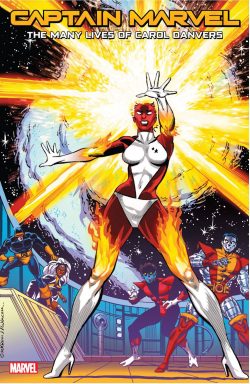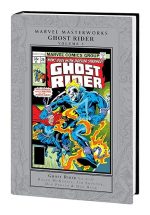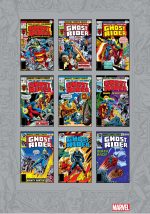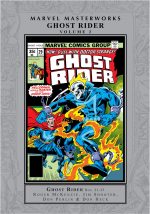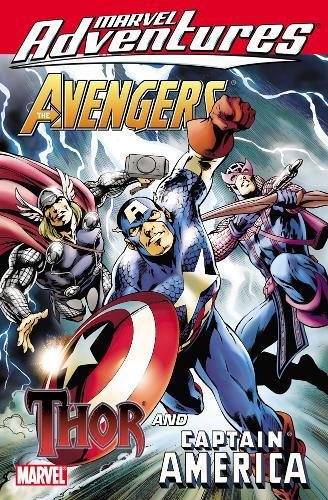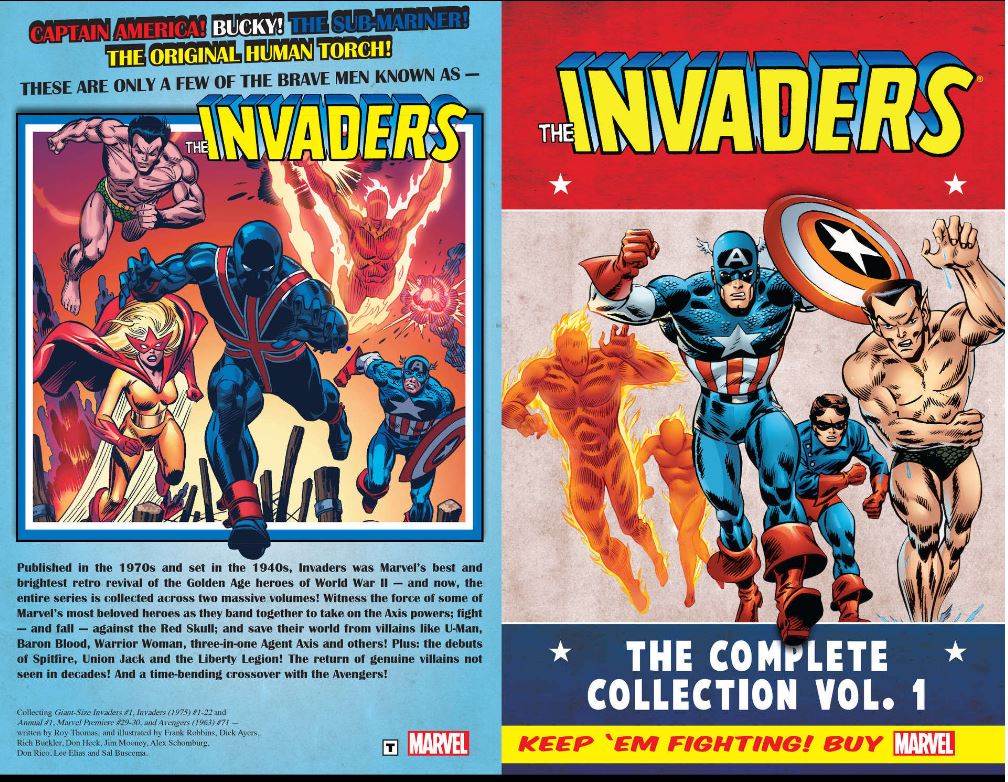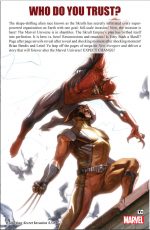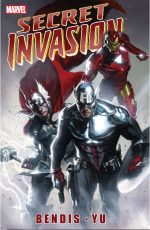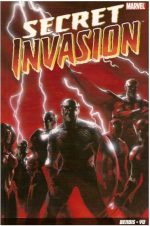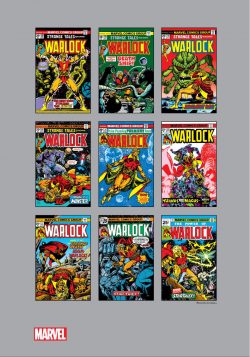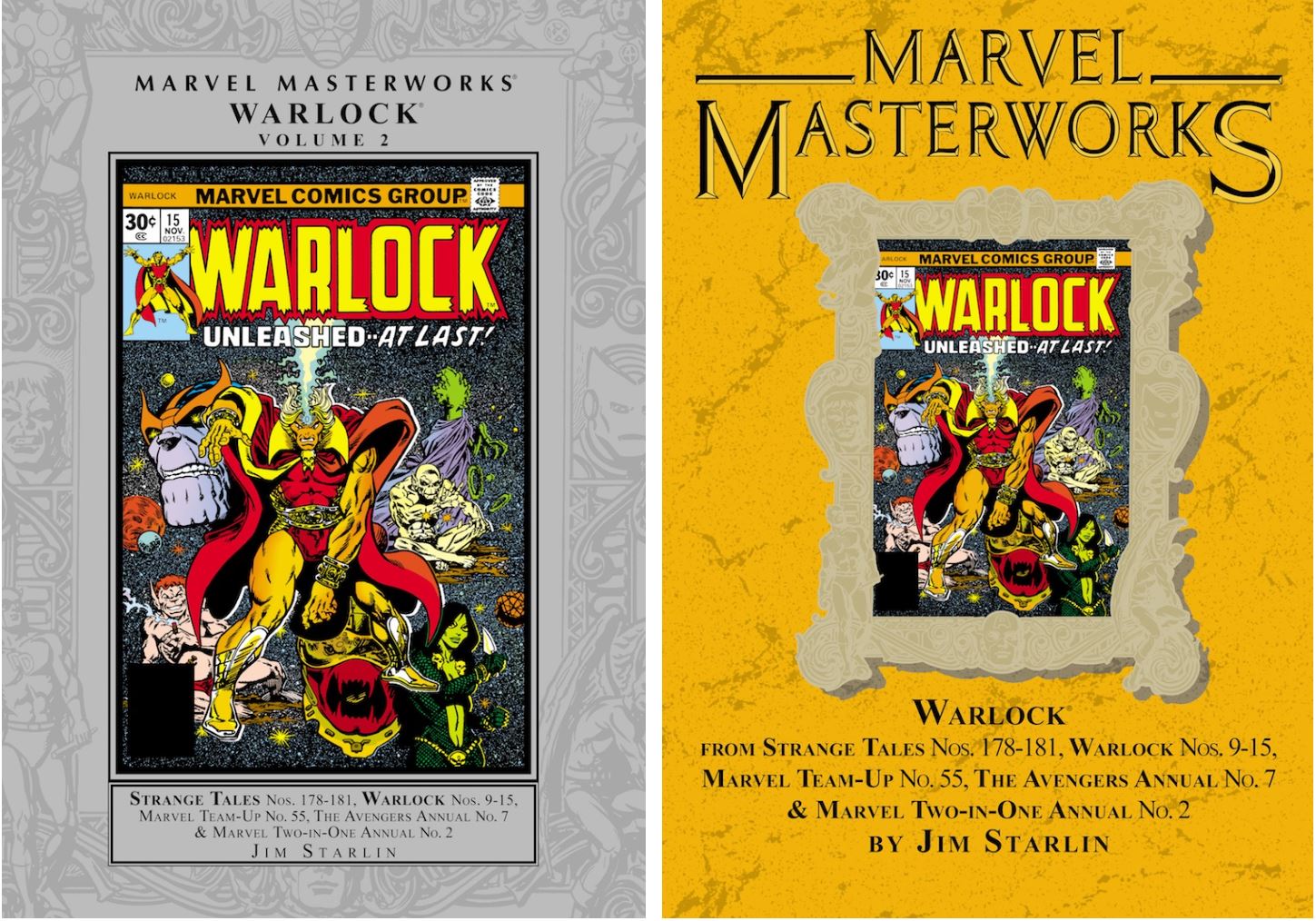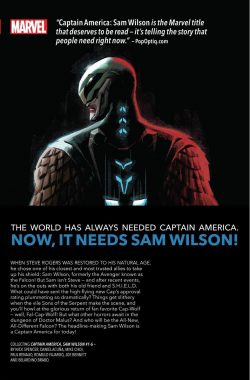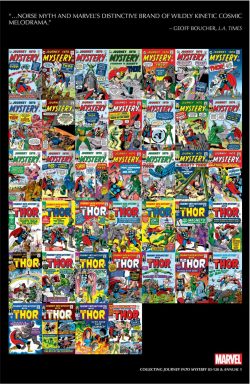

By Stan Lee & Jack Kirby, Larry Lieber, Robert Bernstein, Joe Sinnott, Al Hartley, Don Heck, Chic Stone, Frank Giacoia, Vince Colletta & various (MARVEL)
ISBN: 978-0-7851-8835-3 (B/Digital edition)
Win’s Christmas Gift Recommendation: A Yule Jewel of Great Import… 9/10
Even more than The Fantastic Four, The Mighty Thor was the arena in which Jack Kirby’s restless fascination with all things Cosmic was honed and refined through dazzling graphics and captivating concepts. The King’s string of power-packed signature pantheons began in a modest little fantasy/monster title called Journey into Mystery where – in the summer of 1962 – a tried-and-tested comic book concept (feeble mortal transformed into god-like hero) was revived by the fledgling Marvel Comics to add a Superman analogue to their growing roster of costumed adventurers.
This monumental tome re-presents the pioneering Asgardian exploits from JiM #83-120 and Journey into Mystery Annual #1, spanning cover-dates August 1962 to September 1965 in a blazing blur of innovation and seat-of-the-pants myth-revising and universe-building.
It is lettered throughout by unsung superstars Art Simek, Sam Rosen, Ray Holloway, Terry Szenics and Martin Epp and sadly an anonymous band of colourists. As well as a monolithic assortment of nostalgic treats at the back, this mammoth tome is dotted throughout with recycled Introductions by Stan Lee, taken from the earlier Marvel Masterworks editions and includes editorial announcements and ‘The Hammer Strikes!’ newsletter pages for each original issue to enhance overall historical experience…
The eternal Edda unfolds with the lead feature of Journey into Mystery #83 (August 1962) which saw a brawny bold warrior jostle aside the regular roster of monsters, aliens and sinister scientists in a brash, vivid explosion of verve and vigour. The initial exploit follows disabled American doctor Donald Blake who takes a vacation in Norway only to encounter the vanguard of an alien invasion. Fleeing, he is trapped in a cave and finds an old, gnarled walking stick. When in his frustration he smashes the stick into a huge boulder obstructing his escape, his puny frame is transformed into the Norse God of Thunder, Mighty Thor!
Officially plotted by Stan Lee, scripted by his brother Larry Lieber and illustrated by Kirby and inker Joe Sinnott (at this juncture a full illustrator, Sinnott would become Kirby’s primary inker for most of his Marvel career), ‘The Stone Men of Saturn’ is pure early Marvel: bombastic, fast-paced, gloriously illogical and captivatingly action-packed. The hugely under-appreciated Art Simek was the letterer and logo designer.
It was clear that they whey were making it up as they went along – not in itself a bad thing – and that infectious enthusiasm shows in the next adventure. ‘The Mighty Thor Vs. the Executioner’ is a “commie-busting” tale of its time with a thinly disguised Fidel Castro wasting his formidable armies in battle against our hero.
The tale introduced Blake’s nurse Jane Foster: at this point a bland cipher adored from afar by the Norse superman’s timid alter-ego. The creative team settled as Dick Ayers replaced Sinnott, and with #85’s ‘Trapped by Loki, God of Mischief!’, the final element fell into place with the “return” of a suitably awesome arch-foe – the hero’s half-brother. This evil magician and compulsive trickster escaped divine incarceration and his first thought was to bedevil Thor by causing terror and chaos on the world of mortals he was so devoted to.
Here, a new and greater universe was revealed with the first tantalising hints and glimpses of the celestial otherworld and more Nordic gods…
JiM #86 introduced another recurring villain. Zarrko, bristling at the sedentary ease of 23rd century life, travels to 1962 to steal an experimental “C-Bomb”, forcing the Thunderer into a stirring sortie through time and inevitable clash with super-technology ‘On the Trail of the Tomorrow Man!’ With his return, Blake became a target of Soviet abductors: the sneaky spies even managed to make Thor a ‘Prisoner of the Reds!’ before he eventually emerged unscathed and triumphant…
JiM #88 saw ‘The Vengeance of Loki’ as the malevolent miscreant uncovered Thor’s secret identity and naturally menaced Jane whilst ‘The Thunder God and the Thug’ offered drama on a human scale as a gang boss runs riot over the city and roughshod over a good woman’s heart, giving the Stormbringer a chance to demonstrate his sympathetic side by crushing Thug Thatcher and freeing poor abused Ruby from his influence.
Issue #90 was an unsettling surprise as the grandeur of Kirby & Ayers was replaced by the charming yet dynamism-free art of Al Hartley, who illustrated Lee & Lieber’s stock alien-invasion yarn ‘Trapped by the Carbon-Copy Man!’ A month later the Storm Lord took on ‘Sandu, Master of the Supernatural!’, with Sinnott pencilling and inking a thriller starring a carnival mentalist who – augmented by Loki’s magic – came catastrophically close to killing our hero. Sinnott limned JiM #92’s ‘The Day Loki Stole Thor’s Magic Hammer’ – scripted by Robert Bernstein over Lee’s plot – which moved the action fully to Asgard for the first time as Thor sought to recover his stolen weapon after Loki ensorcelled the magnificent mallet. Kirby & Ayers momentarily returned for Cold War/Atom Age thriller ‘The Mysterious Radio-Active Man!’ Again scripted by Bernstein it sees “Mao Tse Tung” unleash an atomic assassin in retaliation for Thor thwarting China’s invasion of India. Such “Red-baiting” fare was common for early Marvel, but their jingoistic silliness can’t mar the eerie beauty of the artwork. With this tale, rangy, raw-boned Thor completed his slow metamorphosis into the husky, burly blonde bruiser who dominated any panel he was in.
Sinnott returned for the next three (somewhat pedestrian) adventures. ‘Thor and Loki Attack the Human Race!’, ‘The Demon Duplicator’ and ‘The Magic of Mad Merlin!’, but these mediocre tales of magic-induced amnesia, science-generated evil doppelgangers and an awakened ancient mutant menace were the last of an old style of comics. Stan Lee took over scripting with Journey into Mystery #97 and a torrent of action wedded to soap opera melodrama began a fresh style for a developing readership.
‘The Lava Man’ in #97 was drawn by Kirby, with subtly textured inking by Don Heck adding depth to the tale of an invader summoned from subterranean realms to menace humanity at the behest of Loki. More significantly, a long running rift between Thor and his stern father Odin was established after the Lord of Asgard refused to allow his son to love mortal Jane.
This acrimonious triangle was a perennial subplot attempting to humanise Thor, because already he was a hero too powerful for most villains to cope with.
Most importantly, this issue launched a spectacular back-up series. ‘Tales of Asgard – Home of the Mighty Norse Gods’ gave Kirby a vehicle to indulge his fascination with legends. Initially adapting classic tales but eventually with all-new material particular to the Marvel pantheon, he built his own cosmos and mythology, which underpinned the company’s entire continuity. This first saga, scripted by Lee and inked by George Bell (AKA Jack’s Golden Age collaborator George Roussos), outlined the origin of the world and the creation of the World Tree Yggdrasil.
‘Challenged by the Human Cobra’ introduced the serpentine villain (bitten by a radioactive cobra, would you believe?) in a tale by Lee & Heck, whilst Kirby – with them in attendance – offered ‘Odin Battles Ymir, King of the Ice Giants!’: a short, potent fantasy romp which laid the groundwork for decades of cosmic wonderment of years to come.
The format held for issues #99 & 100 with the lead story (first 2-parter in the run) introducing the ‘Mysterious Mister Hyde’ – and concluding a month later with ‘The Master Plan of Mr. Hyde!’ The modern yarn featured a contemporary chemist who could transform into a super-strong villain at will who framed Thor for his crimes whilst in primordial prehistory Kirby detailed Odin’s war with ‘Surtur the Fire Demon’, and latterly (with Vince Colletta inking) crafted an exploit of the All-Father’s so different sons in ‘The Storm Giants – a Tale of the Boyhood of Thor’ (Paul Reinman inks). As always, Lee scripted these increasingly influential histories…
Breaking for another recycled Lee Introduction, the modern myth-making resumes with JiM #101 (entirely inked by Roussos) which saw Kirby finally assume pencilling on both strips. In ‘The Return of Zarrko, the Tomorrow Man’ Odin halves Thor’s powers for disobedience just as the futuristic felon abducts the Thunderer to conquer the 23rd century. Another 2-parter, it’s balanced by another exuberant tale of boy Thor. ‘The Invasion of Asgard’ sees the valiant lad fight a heroic rearguard action introducing a host of future villainous mainstays such as Rime Giants and Geirrodur the Troll.
Epic conclusion ‘Slave of Zarrko, the Tomorrow Man’ is a tour de force notable for Chic Stone’s debut as inker. To many of us dotards, his clean, full brush lines make him The King’s best embellisher ever. The triumphant futuristic thriller is balanced by brooding Reinman-inked short ‘Death Comes to Thor!’ as the teen tyro faces his greatest challenge yet. Two women who would play huge roles in his life premiered in this 5-pager: young goddess Sif and Hela, Queen of the Dead.
Lee, Kirby & Stone introduced more memorable misanthropes in ‘Menaced by The Enchantress and The Executioner!’: ruthless renegade Asgardians resolved to respectively seduce and destroy the warrior prince in the front of JiM #103 whilst the rear revealed ‘Thor’s Mission to Mirmir!’ and how the gods created humanity. That led one month later to a revolutionary saga when ‘Giants Walk the Earth!’.
At last Kirby’s imagination was given full play as Loki tricks Odin into visiting Earth, and subsequently liberates ancient elemental enemies Surtur and Skagg, the Storm Giant from Asgardian bondage to ambush the absent All-Father…
This cosmic clash saw noble gods battling demonic devils in a new Heroic Age, with the greater role of the Norse supporting cast – especially noble comrade-in-arms Balder. This was reinforced by a new Tales of Asgard backup feature focussing on individual Gods and Heroes. ‘Heimdall: Guardian of the Mystic Rainbow Bridge!’ was first, with Heck inking.
Issues #105-106 teamed two old foes in ‘The Cobra and Mr, Hyde!’ and ‘The Thunder God Strikes Back!’: another continued story stuffed with tension and spectacular action, proving Thor was swiftly growing beyond the constraints of traditional single issue adventures. Respective back-ups ‘When Heimdall Failed!’ (Lee, Kirby & Roussos) and ‘Balder the Brave’ (Lee, Kirby & Colletta) further fleshed out the Asgardian pantheon deviating by more and more from the classical Eddas and Sagas.
JiM #107 premiered a petrifying villain ‘When the Grey Gargoyle Strikes!’: a rare yarn highlighting the fortitude of Dr. Blake rather than the Thunder God who was increasingly reducing his own alter-ego to an inconsequentiality. Closing the issue, the Norn Queen debuted in ‘Balder Must Die!’: a quirky reinterpretation of myth by Kirby & Colletta.
After months of manipulation, the God of Evil once again took direct action in ‘At the Mercy of Loki, Prince of Evil!’, With Jane Foster a victim of Asgardian magic, the willing assistance of new Marvel star Doctor Strange made this a captivating team-up must-read, whilst ‘Trapped by the Trolls!’ (Colletta inks) showed the power and promise of tales set solely on the far side of the Rainbow Bridge as Thor liberates Asgardians from subterranean bondage.
Journey into Mystery #109 was another superb infomercial adventure and a plug for a recent addition to the Marvel roster. ‘When Magneto Strikes!’ pits Thor against the X-Men’s greatest foe and his Brotherhood of Evil Mutants in a cataclysmic clash of fundamental powers, but you couldn’t really call it a team-up since the heroic mutants are never actually seen. Tantalising hints and cropped glimpses are fascinating teasers now, but the kid I then was felt annoyed not to have seen these new heroes – Oh! wait… maybe that was the point?
Young Thor feature ‘Banished from Asgard!’ is an uncharacteristically lacklustre effort as Odin and Thor enact a devious plan to trap a traitor in Asgard’s ranks. This issue also saw the launch of the letters page The Hammer Strikes and a Special Announcements Section, all included from here on for your delectation…
By #110 the ever-expanding world of Asgard was fully established: a mesmerising milieu for Thor’s earlier adventures and exotic setting for fresh wonders all hinting at a forthcoming era of cosmic fantasy to run beside the company’s signature Manhattan-based superhero sagas. ‘Every Hand Against Him!’ (Lee, Kirby & Stone) combines both, as Loki has earthly miscreants Cobra and Mr. Hyde kidnap and wound nigh unto death Thor’s mortal beloved Jane, even as Odin again overreacts to Thor’s affections for the human.
Following a stunning Kirby & Stone Thor Pin-up, and balancing that tension-drenched clash of Good and Evil, is a crafty vignette of Young Thor describing ‘The Defeat of Odin!’ in an old and silly plot sweetened by breathtaking battle scenes. It’s followed by another Lee Introduction before the concluding clash with Cobra & Hyde redefining ‘The Power of the Thunder God!’ With a major role for Balder the Brave and further integrating “historical” and contemporary Asgard in a spellbinding epic of triumph and near-tragedy, it’s complimented by a Loki Pin-up and precedes a fable co-opting a Greek myth (Antaeus if you’re asking) as ‘The Secret of Sigurd!’ (inked by Colletta).
Journey into Mystery #112 gave readers what they had been clamouring for with ‘The Mighty Thor Battles the Incredible Hulk!’: a glorious gift to all those fans who perpetually ask “who’s stronger…”? Arguably Kirby & Stone’s finest collaborative moment, it details a private duel that apparently appeared off-camera during a free-for-all between in The Avengers #3 when the heroes battled Sub-Mariner and the eponymous Green Goliath. The raw aggressive power of that clash is balanced by an eagerly anticipated origin in ‘The Coming of Loki!’ (Colletta inks): a retelling of how Odin adopts the baby son of Laufey, the Giant King.
In #113’s ‘A World Gone Mad!’ the Thunderer – after saving the Shining Realm from invasion – again defies Odin to court Jane: a task made hazardous by the return of the Grey Gargoyle. A long-running plot strand – almost interminably so – was the soap-opera tangle caused by Don Blake’s love for his nurse – a passion his alter ego shared. Sadly, the Overlord of Asgard could not countenance his son with a mortal, in another heavy-handed example of that acrimonious triangle.
The mythic moment at the back then exposed ‘The Boyhood of Loki!’ (inked by Colletta), a pensive, brooding foretaste of the villain to be, before JiM #114 opened a 2-part tale starring a new villain of the kind Kirby excelled at: a vicious thug who suddenly lucked into overwhelming power.
‘The Stronger I Am, The Sooner I Die!’ finds Loki imbuing hardened felon Crusher Creel with the ability to duplicate the strength and attributes of anything he touches, but before Creel endures ‘The Vengeance of the Thunder God’ (inked by Frank Giacoia as “Frankie Ray”) we’re graced with another Asgardian parable – ‘The Golden Apples!’…
Issue #115’s back-up mini-myth ‘A Viper in our Midst!’ sees young Loki clandestinely cementing relations with the sinister Storm Giants, before a longer Thor saga began in #116, with Colletta becoming regular inker for both lead and support features. ‘The Trial of the Gods’ disclosed more aspects of Asgard as Thor and Loki undertake a brutal ritualised Trial by Combat, with the latter cheating at every step, after which ‘Into the Blaze of Battle!’ finds Balder protecting Jane even as her godly paramour travels to war-torn Vietnam seeking proof of his step-brother’s infamy.
These yarns are supplemented by stellar novellas ‘The Challenge!’ and ‘The Sword in the Scabbard!’, wherein Asgardian cabin-fever informs an official Quest instituted to expose a threat to the mystic Odinsword, the unsheathing of which will destroy the universe…
Journey into Mystery #118’s ‘To Kill a Thunder God!’ ramps up the otherworldly drama as Loki, to cover his tracks, unleashes an ancient Asgardian WMD – The Destroyer. When it damages the mystic hammer of Thor and nearly kills The Thunderer in ‘The Day of the Destroyer!’, the God of Mischief is forced to save his step-brother or bear the brunt of Odin’s anger.
Meanwhile in Tales of Asgard The Quest further unfolds with verity-testing talisman ‘The Crimson Hand!’ and ‘Gather, Warriors!’ as a band of literally hand-picked “Argonauts” join Thor’s flying longship in a bold but misguided attempt to forestall Ragnarok…
With The Destroyer defeated and Loki temporarily thwarted, Thor returns to America and then Asgard ‘With My Hammer in Hand…!’ only to clash once more with the awesome Absorbing Man in the start of another multi-part saga that will continue in the next volume…
However, before that bombastic battle there’s not only the next instalment of the Asgardian Argonauts who boldly ‘Set Sail!’ but also the superb lead story from Journey into Mystery Annual #1, wherein in undisclosed ages past the God of Thunder fell into the realm of the Greek Gods for a landmark heroic hullabaloo ‘When Titans Clash! Thor vs. Hercules!’
This incredible all-action episode is augmented here by a stunning and beautiful double-page pin-up of downtown Asgard – a true example of Kirby magic – plus one last Lee Intro essay.
There’s a relative paucity of bonus material here but it’s all first rate: including unretouched original artwork, house ads and a full run of covers from Marvel Tales #1, 3-27 and Special Marvel Edition #1-2 from the 1960s where his early exploits were first reprinted. Closing the section is the cover art for this collection by Olivier Coipel, Mark Morale & Laura Martin.
These early tales of the God of Thunder show the development not only of one of Marvel’s core narrative concepts but, more importantly, the creative evolution of perhaps the greatest imagination in comics. Set your common sense on pause and simply wallow in the glorious imagery and power of these classic adventures and revel in what makes comic book superheroes such a unique experience.
© 2022 MARVEL.


